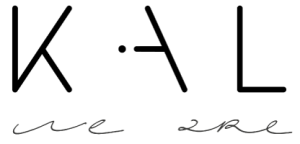“You have to try the impossible to achieve the possible”
Hermann Hesse
This quote very much epitomizes the beginnings of we are KAL 2,5 years ago.
Starting as a research project out of interest and curiosity, we are KAL is now a social enterprise slowly growing, working in three different parts of India as well as in Leipzig, Germany as a home base.
I am currently in India working with our teams in Ladakh, Assam and Himachal Pradesh. A week ago I reached Assam and spent the past weekend in Assam's neighboring state Meghalaya, where the journey of we are KAL began.
The preparations
KAL might have not started in the most conventional way... When looking back, the bitter and mesmerizing moments of the very beginning have been the reason to not give up. I would like to share its story with you.
In February 2014 I left Delhi, where I had been living and working for 1,5 years at this point. My interest for textiles, weaving and different cultures triggered a decision of a 9 month long research trip which was starting in North East India.
After attending a symposium on North Eastern textiles in Delhi a week before my departure, my curiosity for textiles from this region grew, it gave me a direction and I met interesting people working on textiles, folklore, culture and agriculture.
The road
My first destination was Shillong, the capital of Meghalaya. The Dakmanda, the traditional dress of the Garo people who live in the West of Meghalaya, caught my eye straight away. It is a very colorful wrap, decorated with different flowers as extra weft design. It's looking beautiful and the weaving techniques are very intricate.
I made my way to Tura, quite blindly I have to admit... The two weeks which followed were filled with visits to the weaving office, the agriculture office, the district commissioners office, small villages with weaving culture and different weavers and organizations in Tura itself.
The obstacle
However, I could not quite find what I was looking for: Garo people who practice the art of weaving the dakmanda from their home, ideally with natural fiber. Unfortunately, despite having been a major hub for cotton many decades before, shops in Tura are nowadays mostly selling acrylic yarn for the dakmanda.
Of course, in times like these one feels discouraged and also a bit desperate, questioning this research and the attempt to find what seems impossible...
The overcoming
After my third visit to the weaving office with the goal to get a contact of a home based weaver I was given the phone number of Alpha Sangma, a home based Garo weaver of the Dakmanda who has been weaving for two decades and passed on the art to her daughter Elasha.

In March 2014 when we met for the very first time and wearing the dakmanda.
Meeting this family was a blessing and the end to my difficult search.
For more than three weeks I stayed with them in their beautiful home down by a creek in Tura. We spent our days weaving and I documented and learned all about the art of weaving on a flyshuttle loom.
Thanks to the NGO Exotic Echo in Nagaland, we could use handspun organic cotton which was naturally dyed in Nagaland.

Naturally dyed hand-spun cotton from the NGO Exotic Echo in Nagaland
The family of Alpha and Elasha have a special place at we are KAL. I would like to thank the family for encouraging me for we are KAL which continued to lead me to Assam and Ladakh after staying in Tura in March 2014.
Yes, they helped me to make the impossible possible.

United once again in August 2016 with Elasha"s daughter Avria Anni.
Over the last 2,5 years we are KAL has formed a community of weavers, spinners, knitters, farmers, nomads and designers who are all part of the creation cycle of textiles and clothes. We are slowly growing and day by day, we are trying to establish a holistic way of making textiles and clothes which is neither harmful to the farmer, the weaver or the wearer of our clothes. Additionally, we want to have a positive impact on the cultivation of natural raw materials, traditional lifestyles and craft as well as on the lives of the people who are part of KAL.


Хорошего дня.
How could any of this be better stated? It coulnd’t.
Leave a comment